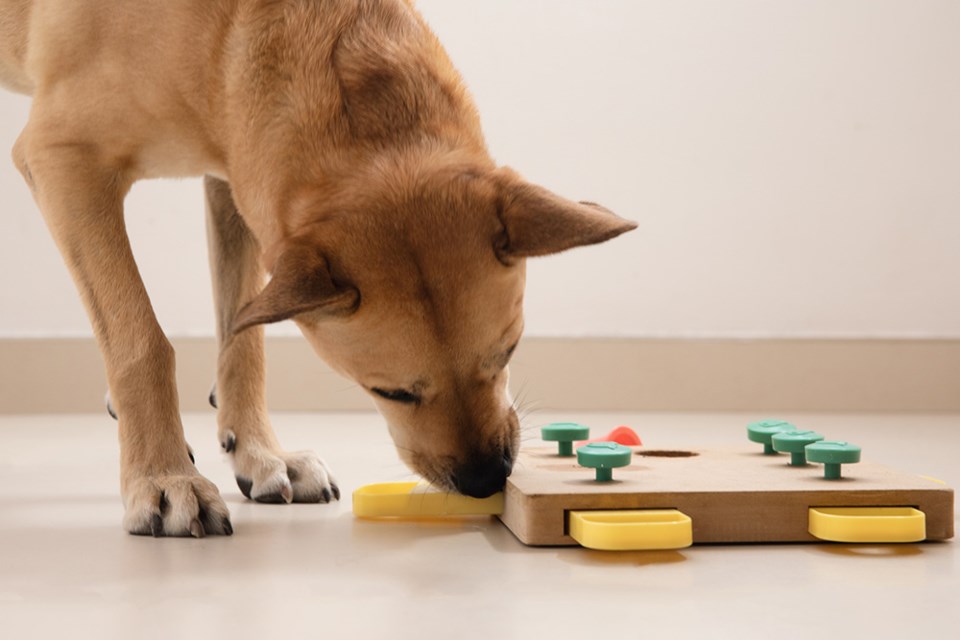Professional dog trainer Sandy Middleton says it makes "scents" for canines to learn to use their amazing sense of smell for activities such as nose work and man-trailing.
Middleton, of Best Friends Dog Training and Behaviour, stated in a media release that dogs can put their amazing noses to work by participating in scent work classes here in qathet region.
“I always look forward to scent class,” stated Middleton. “The dogs are excited and ready to work and so are the people. It’s so rewarding to watch the dogs meet each new challenge and expand their skills and confidence as they do what they love to do – use their noses.”
Middleton stated that dogs can catch a scent from more than 1.5 kilometres away and follow it for hundreds of kilometres. Or, they can smell a spritz of perfume in an enclosed stadium and distinguish its ingredients.
“Scientists estimate that a dog’s sense of smell is between 10,000 and 100,000 times more powerful than a humans,” stated Middleton. “Dogs have up to 300 million olfactory receptors in their noses, compared to six million in humans.
“The olfactory system in the brain dedicated to processing smells is much bigger in dogs and their noses are very different from ours. For example, their nostrils can operate independently and separate odours. We smell a delicious aroma coming from the kitchen signalling dinner is ready, but a dog can separately smell each individual component of the meal.”
Middleton stated that dogs’ extraordinary noses allow them to do extraordinary things. She added that specially trained dogs are employed to search for narcotics or explosives, to respond to medical events, and to hunt through rubble to fund missing people after disasters.
“Fortunately, tough scent work is no longer the sole preserve of specialist and operational dog training and is now available to families and their pet dogs for fun and sport,” added Middleton.
She stated that her dog training company offers two types of scent work: nose work and man-trailing. In nose work, dogs learn to find hidden odours. Trainers use essential oils, starting with wintergreen and pine, and the dogs learn to recognize, choose and indicate the odour through increasingly complex search scenarios in containers, interiors, exteriors and vehicles, according to Middleton.
In man-trailing, dogs learn to find hidden people. Middleton stated that canines follow a trail of human scent to locate a specific person.
“The dog learns to match the trail of scent to an article left by the human who has run off to hide,” stated Middleton. “As the dog gains experience and confidence, the trails become more complex and the starts more difficult.”
Middleton stated that all breeds of dogs, ages and sizes can participate in classes.
“We set every dog up for success by meeting them where they are and creating a safe and comfortable environment for them to work,” stated Middleton.
To find out more about the six-week nose work classes, go to bestfriendsdogtraining/nosework. To find out more about introductory man-trailing workshops, go to bestfriendsdogtraining/mantrailing.



